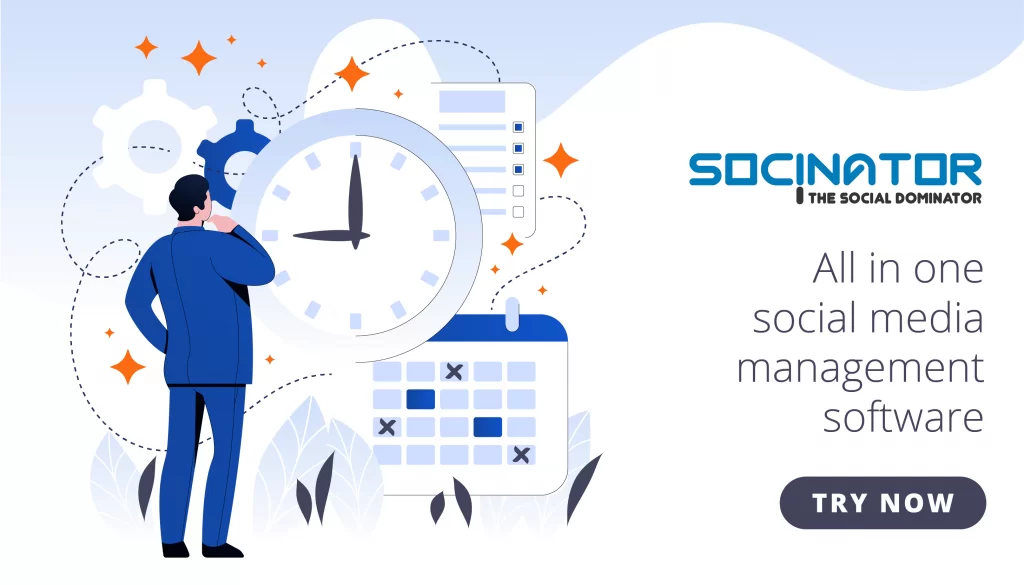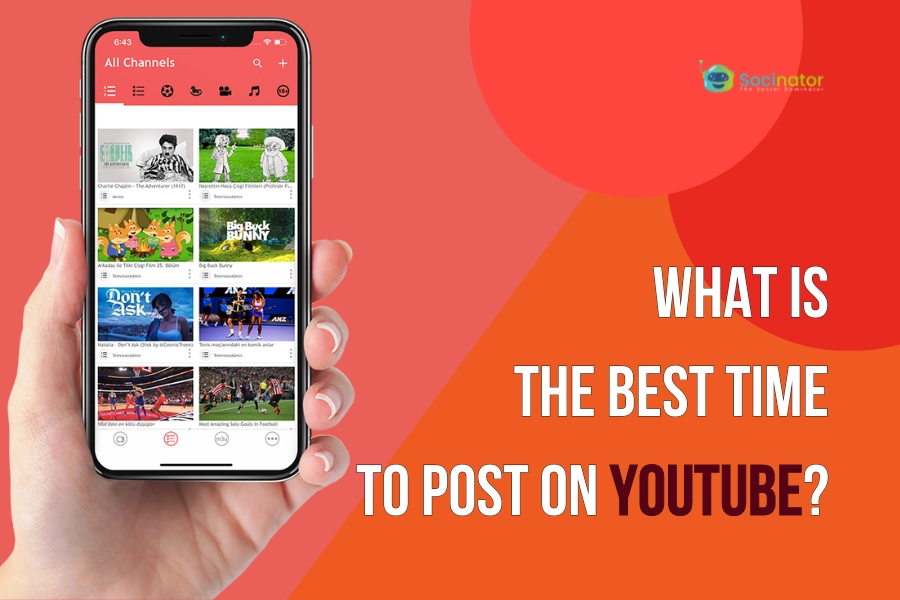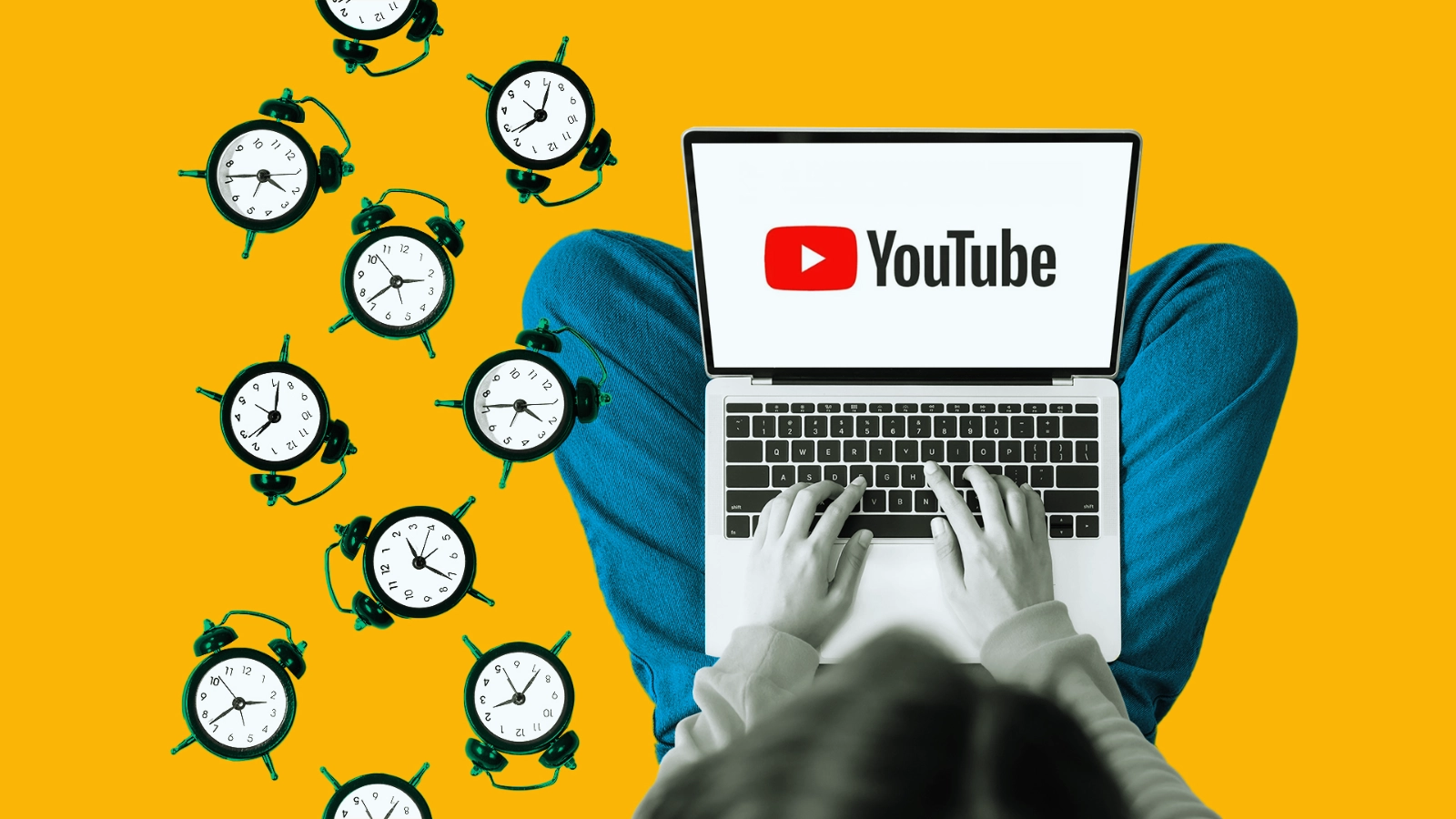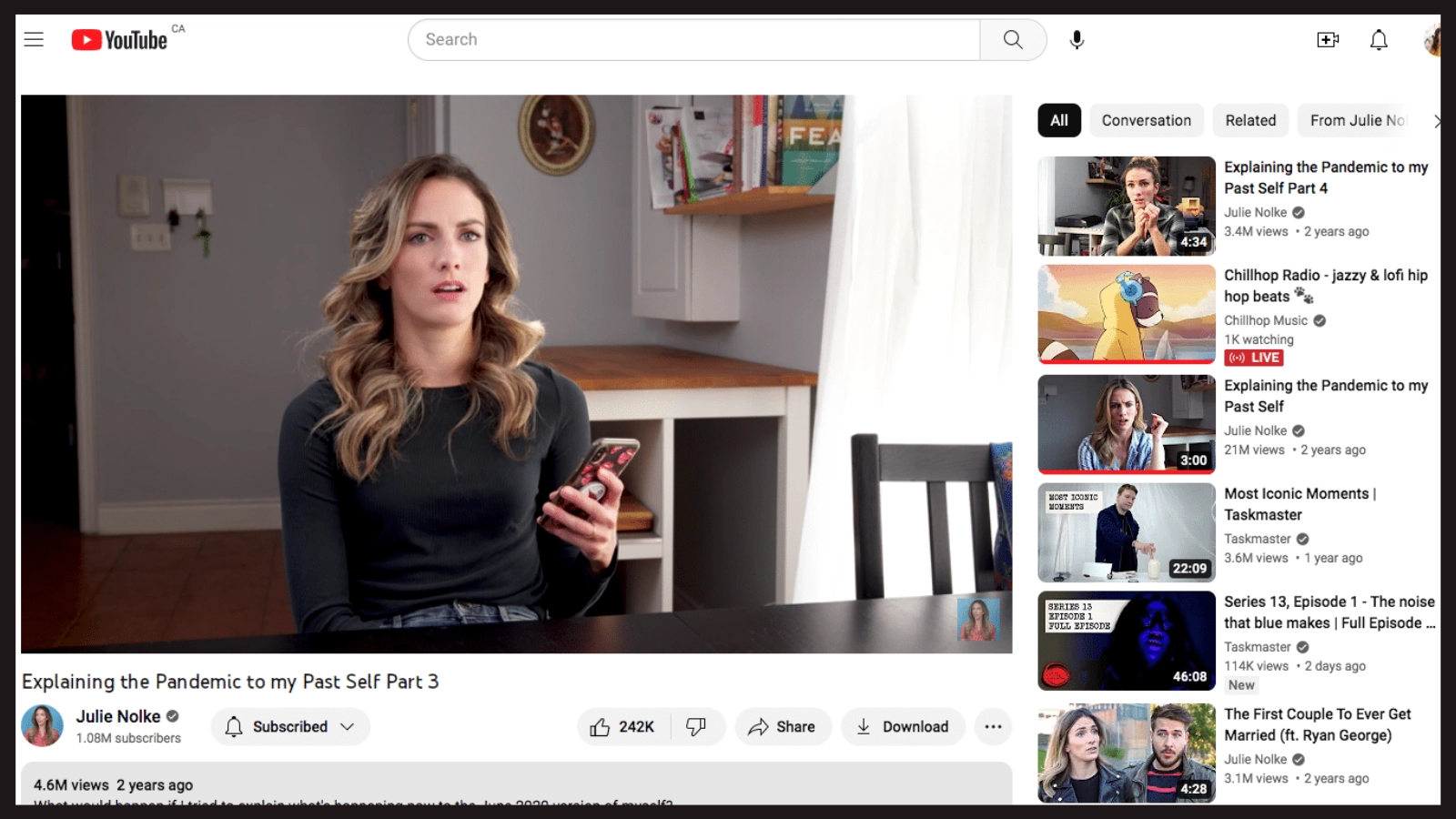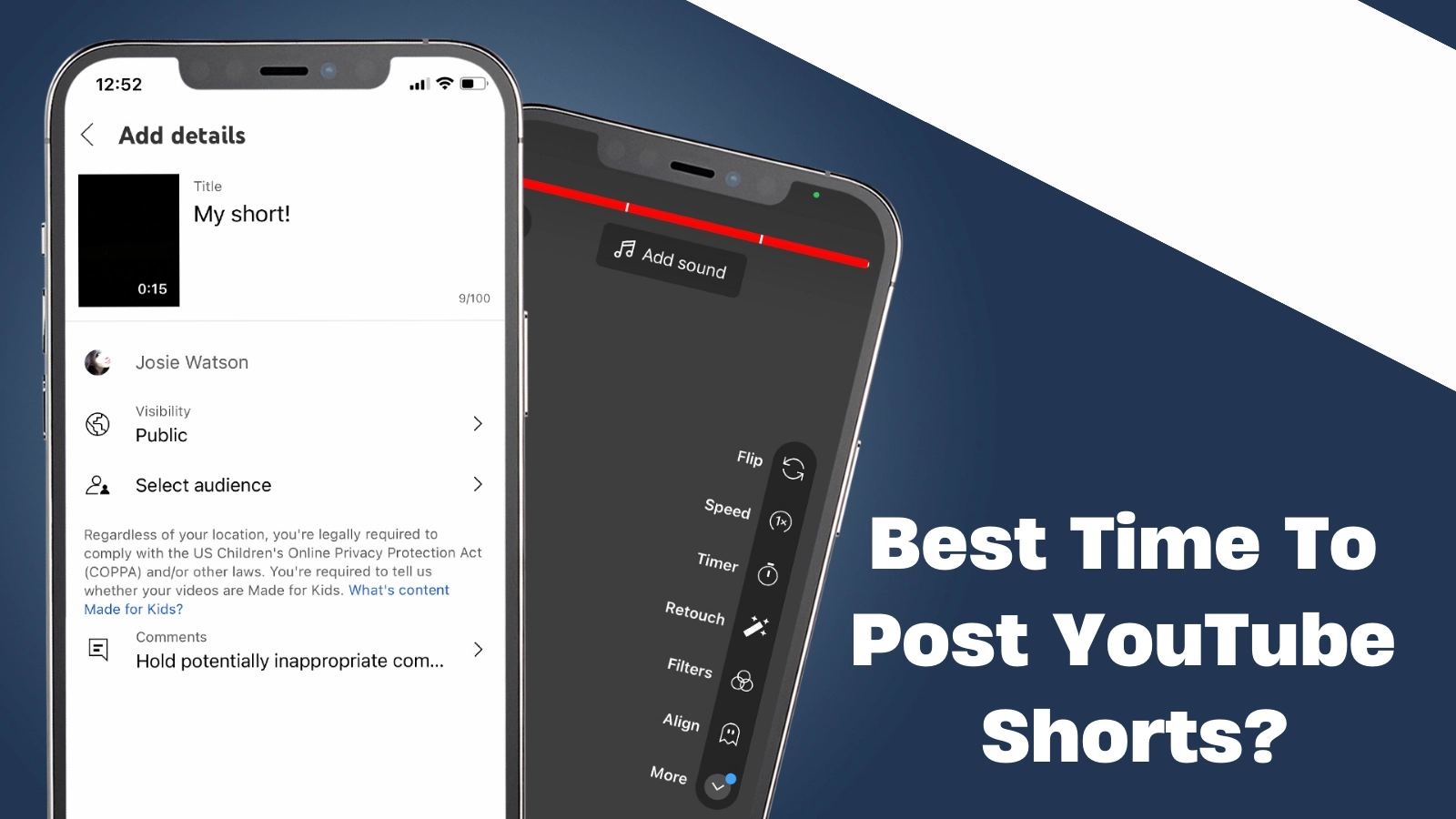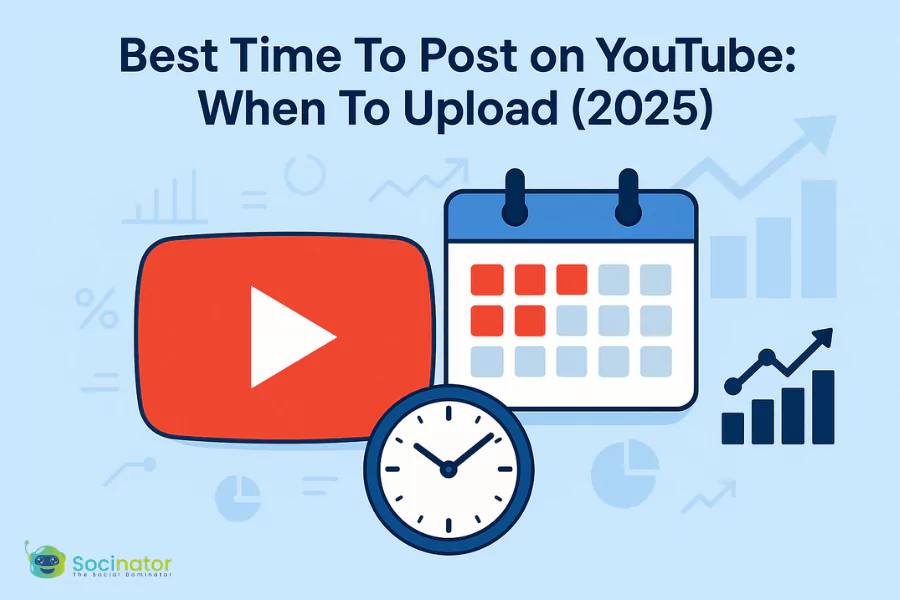Have you ever met the distinct agony of pouring your heart and soul into a video, only to wonder if it’ll ever reach the right eyes? We get it – the struggle is real. Well, guess what?
The timing of your YouTube uploads might just be the missing piece to your content puzzle. In 2023, the pressure to decipher the algorithm’s secrets and unveil the ideal moment to hit that upload button can feel like a constant battle.
In this blog, we’re going to reveal the best time to upload to YouTube for better conversion. This journey isn’t just about gaining views; it’s about understanding the heartbeat of your audience and strategically unveiling your content when they’re most receptive.
So, let’s Go!! And make your posting time more professional with more engagement.
Listen The Blog Now!!
Does It Matter What Time You Post On YouTube?
The timing of your YouTube posts significantly impacts your video’s performance. YouTube’s algorithm considers various factors, with posting time crucial for visibility and engagement.
The algorithm aims to deliver personalized content by analyzing when users are most active. Tailoring your posting time to your audience’s habits increases the likelihood of recommendations.
There’s no one-size-fits-all answer for the best time to upload to YouTube. Factors like your audience, content type, and viewer location influence the ideal time. For example, if your audience is mostly students, post after school for higher engagement.
Why Is The Best Time To Upload To YouTube Different?
The best time to upload to YouTube differs due to various factors shaping viewer behavior. Key reasons include:
Audience Diversity: Different demographics have distinct online habits. Tailoring your posting time to your audience’s routine enhances engagement.
Content Type Impact: The nature of your content influences the optimal posting time. Educational videos might thrive in the evening, while entertaining content may perform well during leisure hours.
Global Audience Consideration: If your audience spans different time zones, posting when the majority is active ensures maximum visibility.
Competition and Platform Dynamics: Posting during peak hours may result in higher competition for attention. Choosing less crowded times can enhance visibility.
Day-of-the-Week Dynamics: Midweek days are often considered optimal, but this can vary based on audience habits and preferences.
Seasonal Influences: Seasonal changes can impact viewer behavior. Adapting your schedule to the best time to upload to YouTube reflects these shifts and optimizes engagement.
Algorithm Evolution: Changes in YouTube’s algorithm can affect how often your videos show up in the search results. Staying informed helps adapt your posting strategy.
Regularly analyzing audience behavior, experimenting, and using analytics tools are crucial to finding the ideal posting time for your content. Adapting to the dynamic nature of YouTube ensures consistent engagement with your audience.
Now, as we navigate the intricacies of this digital universe, there’s a silent companion that has effortless youTube profits with automation & become indispensable in the quest for timing perfection—Socinator.
Socinator: Social Media Automation Tool
Socinator is a powerful social media management tool designed to streamline and optimize various aspects of your online presence. Here’s a closer look at some key features and functionalities that make Socinator a valuable asset for social media enthusiasts, marketers, and content creators:
Advanced Scheduling:
Socinator offers a sophisticated scheduling feature that goes beyond the basics. Creators can precisely opt for their best time to upload to YouTube, ensuring their content hits the digital stage when their audience is most active.
Multi-Platform Automation:
Beyond YouTube, Socinator supports automation across various social media platforms. Whether it’s scheduling posts, automating interactions, or managing multiple accounts seamlessly, Socinator streamlines the social media management process.
Audience Insights:
Gain valuable insights into your YouTube videos and their performances with Socinator’s analytics tools. Accordingly, you can decide for the time when your audience is most engaged, allowing you to refine your posting schedule for maximum impact.
Adaptive Strategy with Real-Time Analytics:
Socinator don’t just schedule; they adapt. By leveraging real-time analytics, creators can adjust their posting strategy on the fly, by knowing what type of content resonates most with their audience. Thereby ensuring that their content remains relevant in the ever-evolving digital landscape.
Content Curation and Discovery:
Discover trending content and curate engaging posts effortlessly. This tool helps you stay on top of the hottest trends by giving you the tools to make your content stand out from the crowd.
Bulk Post Scheduling:
For creators managing a multitude of content, Socinator simplifies the process with bulk post-scheduling. Plan and schedule the best time to upload to YouTube’s multiple posts simultaneously, optimizing efficiency in content management.
Automation Rules:
Set up customized automation rules to tailor Socinator to your specific needs. From engaging with followers to reposting relevant content, these rules enhance automation precision.
Engagement Tracking:
Socinator keeps creators in the loop with detailed engagement tracking. Monitor the performance of your content, track likes, comments, and shares, and use this data to refine your content strategy.
In essence, Socinator is more than just a scheduling tool; it’s a strategic partner that understands the intricacies of social media management. From optimizing timing to automating interactions, Socinator empowers creators to focus on what matters most – crafting exceptional content and connecting with their audience. Welcome to a new era of social media mastery with Socinator at the helm.
What Is The Best Day And Time To Post On YouTube According To Research?
 Studies show that if you want to get the most out of your YouTube posts, it’s best to stick to certain times of the week.
Studies show that if you want to get the most out of your YouTube posts, it’s best to stick to certain times of the week.
Here’s a breakdown of the recommended times and days:
Monday to Friday (Weekdays):
Time Slot: 2 p.m. to 4 p.m.
Reasoning: During the week, the best time to upload to YouTube is in the afternoon when people are looking for content. If you want to reach a wide audience, the ideal time to advertise is between 2 pm and 4 pm on weekdays.
Saturday and Sunday (Weekends):
Time Slot: 9 a.m. to 11 a.m.
Reasoning: Weekends, particularly in the late morning, see increased user engagement. Viewers are often more relaxed and open to consuming content during this time.
These suggestions are from what other people are saying and what they’re doing on the platform. However, it’s crucial to note that these time slots may not universally apply to every channel. Audience demographics, content type, and geographic distribution can influence the effectiveness of these time frames.
To optimize your posting schedule, use YouTube Analytics to understand when your specific audience is most active. Regularly analyze and promote your YouTube channel‘s performance data to allow you to refine your strategy and adapt to changes in viewer behavior over the best time to upload to YouTube.
While these research-backed time slots provide a starting point, fine-tuning your posting schedule based on your unique audience dynamics is key to maximizing visibility and engagement on YouTube.
What Is The Worst Time To Post On YouTube?
 The worst time to post on YouTube can vary depending on your target audience and the nature of your content. However, some general timeframes might be better for getting the most out of your engagement.
The worst time to post on YouTube can vary depending on your target audience and the nature of your content. However, some general timeframes might be better for getting the most out of your engagement.
Here are some periods that are often regarded as the worst times to post:
Weekday Mornings:
Posting during early morning hours on weekdays, especially when people are commuting or starting their workday, may result in lower engagement. Viewers are likely preoccupied with their daily routines.
Late Night:
Posting videos late at night might not be effective, as many viewers are likely winding down and may not be actively seeking new content. This time frame may lead to lower visibility and interaction.
Work Hours:
Posting during typical work hours can be counterproductive, especially if your target audience includes professionals. During these hours, viewers may be occupied with job responsibilities, reducing the likelihood of engagement.
Weekend Nights:
Similar to late-night posting on weekdays, weekends during late-night hours might not be ideal. Viewers may be socializing, relaxing, or not actively browsing for content during these times.
While these time frames are considered less favorable, it’s crucial to remember that the best time to upload to YouTube depends on your specific audience and content type.
Analyzing your audience’s habits through YouTube Analytics is essential for tailoring your posting times to their preferences. Regularly monitoring the performance of your videos and adjusting your strategy accordingly ensures that you are maximizing the visibility and engagement of your content on YouTube.
Read More:
Effortless YouTube Profits With Automation
Does YouTube Marketing Automation Work?
Quick Guide On How To Start And Promote YouTube Channel
What Is The Best Time To Post YouTube Shorts?
The suggested timing for posting YouTube Shorts, between 6 P.M. and 10 P.M. on weekdays and 12 P.M. to 6 P.M. on the weekends, aligns with common trends in online viewer behavior.
Here’s a breakdown of the best time to upload to YouTube shorts:
Weekday Evenings (6 P.M. – 10 P.M.):
Viewers are likely more active during the evening hours after work or school. Posting YouTube Shorts during this window provides an opportunity to capture the attention of users who are unwinding and engaging with content.
Weekend Afternoons (12 P.M. – 6 P.M.):
The weekend afternoon period is often associated with leisure and relaxation. Viewers may be more inclined to engage with content during these hours, making it an optimal time to share YouTube Shorts.
Monday and Tuesday:
Designating Monday and Tuesday as the best days aligns with the idea of capturing attention early in the week when users are getting back into their routines. These days often set the tone for viewer engagement.
While these are general guidelines, it’s important to note that the effectiveness of the posting schedule can vary based on the audience, content type, and geographic location.
These suggestions serve as a foundational framework, and it’s essential to consistently monitor YouTube Analytics to refine your posting approach. Experimentation and adjustment based on up-to-date data are crucial for optimizing the reach and engagement of both your YouTube Shorts vs regular videos.
Bonus:
How Often Should You Post On YouTube?
Posting at least once a week on YouTube strikes a balance between consistency and quality, keeping your audience engaged without compromising on content standards.
Regular uploads help maintain a connection with your viewers while allowing you the time to create impactful and well-crafted content. This approach ensures a steady flow of content without overwhelming your schedule, fostering anticipation and loyalty among your audience.
Conclusion
The art of mastering the YouTube posting schedule is a dynamic blend of understanding your audience, scrutinizing analytics, and embracing innovative tools like Socinator.
Determining the best time to upload to YouTube is not just a matter of data analysis; it’s a strategic fusion of human insights and automated accuracy. Socinator, a YouTube marketing automation works as a valuable ally in the quest for social media supremacy, aids in staying up-to-date with the latest trends and planning YouTube posts quickly and easily.
In the grand finale of YouTube success, the key lies in posting smartly at the best time. Socinator enables you to fine-tune your content strategy by leveraging data science, timing, and technology.
By tailoring your posts to what time of day it is, you’ll be able to create a flow of posts that appeals to your followers but also comes at the right time. This combination ensures that your YouTube success journey becomes a well-orchestrated performance, maximizing the impact of your content.
